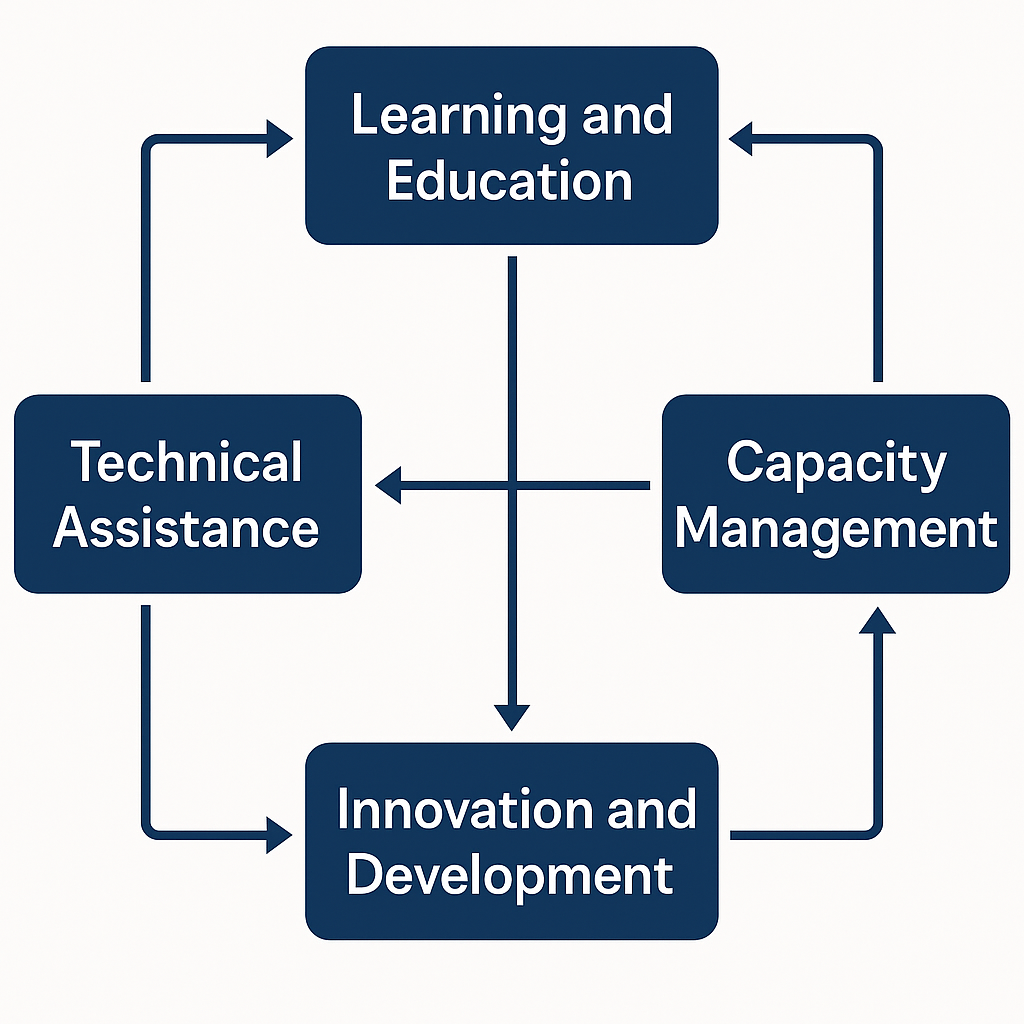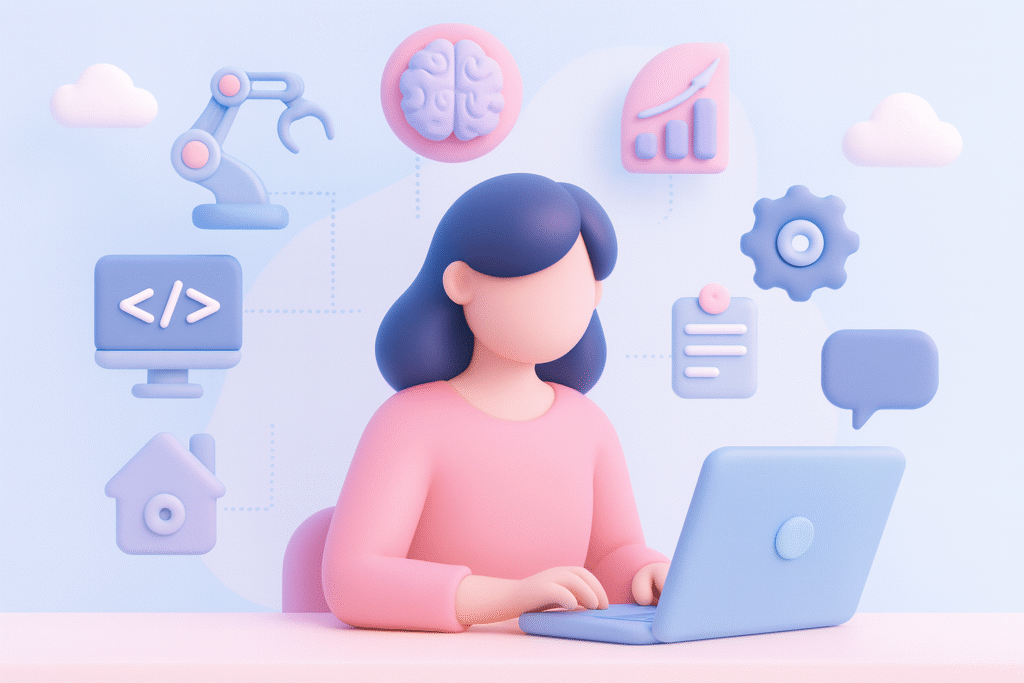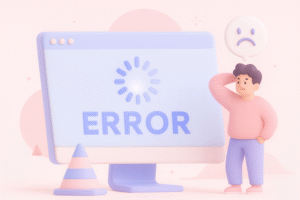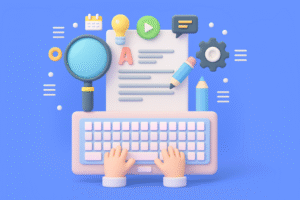Have you ever come across the word CILFQTACMITD and wondered what on earth it’s supposed to mean?
It looks strange (almost like someone mashed their keyboard), but once you dig in, you find a concept that’s surprisingly clear and useful.
Whether you think of it as a simple framework from a small village’s early tools or a modern digital system that learns and improves over time, CILFQTACMITD offers practical ways to work smarter.
It can help you solve problems faster, make better decisions, and even guide intelligent technology to adapt on its own.
This guide walks you through everything you need to know, step by step.
TL;DR – What Is CILFQTACMITD For
- CILFQTACMITD looks complex, but it’s a simple idea: a system that learns, improves, and makes better decisions over time.
- The term comes from blending concepts like Cognitive Intelligence, Learning, Automation, Technology, and Data.
- It began as a basic, community-driven way to solve problems and later evolved into a modern digital framework.
- The core components are Learning, Technical Assistance, Capacity Management, and Innovation, all working together in a continuous improvement cycle.
- It helps with organizational development, collaboration, skill building, digital transformation, quality, and long-term sustainability.
- Industries using it include healthcare, finance, retail, education, manufacturing, business operations, and smart homes.
- Getting started is easy: begin small, stay consistent, explore examples, and expand as you grow.
- Advanced use focuses on clean design, clarity, regular testing, and avoiding overload.
- Future trends point to smarter tools, more automation, better data use, and systems that adapt naturally to users.
What is CILFQTACMITD and Its Origins
CILFQTACMITD may look like a long and confusing word, but the idea behind it is actually quite simple.
Think of it as a smart system that collects information, learns from it, and then uses that learning to do things better the next time.
Let’s begin by unpacking the acronym, it’s the key to understanding CILFQTACMITD:
- Cognitive
- Intelligence
- Learning
- Frameworks
- Quantification
- Transformation
- Automation
- Collaboration
- Machine Learning
- Integration
- Technology
- Data
Although it sounds modern, the idea began long ago in a small village where people used simple tools and slowly discovered better ways to work together.
Today, that same spirit lives on in the concept of CILFQTACMITD: learn a little each day, improve steadily, and keep growing with every step.
Core Components of CILFQTACMITD
CILFQTACMITD brings together several interconnected elements that allow it to function as both a simple, human-friendly framework and a smart, self-learning digital system.
These components work together to help systems improve, adapt, and make better decisions over time.

Below are the 4 foundational pillars that define how CILFQTACMITD operates.
1. Learning & Education
At its heart, CILFQTACMITD is a learning-driven model. In its traditional form, it emphasizes training, repetition, and step-by-step improvement. In its digital form, it enables systems to learn from data.
What this component involves:
- Understanding key concepts gradually
- Practicing daily to reinforce memory
- Using simple guides, examples, or datasets
- Enabling machines or people to recognize patterns
- Creating personalized adjustments based on new information
Why it matters:
Learning ensures that whether a person or a system is using CILFQTACMITD, improvement happens continuously instead of only once. This component is what allows growth, intelligence, and long-term performance upgrades.
2. Technical Assistance
This component focuses on providing the support needed to apply CILFQTACMITD effectively.
Traditional context:
- Simple tools (notebook, workspace, videos) that guide the user
- Tutorials, communities, and hands-on techniques
- Step-by-step help for beginners
Digital context:
- Systems that assist with data processing
- Algorithms guiding decision-making
- Computational tools that refine performance
- Automated suggestions, alerts, or optimizations
Why it matters:
Technical assistance bridges the gap between knowing what to do and doing it well. It ensures that users (or automated systems) can apply the framework correctly, consistently, and efficiently.
3. Capacity Management
Capacity management ensures that the system, whether human or digital, has the resources, structure, and stability needed to grow.
Traditional interpretation:
- Managing your time, tools, and workspace effectively
- Staying organized to avoid overwhelm
- Building confidence and clarity through structured practice
Digital interpretation:
- Managing data storage, system load, and workflow efficiency
- Ensuring machines have enough resources to learn and operate
- Predicting maintenance needs (in factories or automated systems)
- Balancing speed, power, and performance
Why it matters:
Without capacity management, even the best ideas fall apart. This component ensures sustainability, reliability, and long-term success.
4. Innovation & Development
This is where CILFQTACMITD becomes powerful. Innovation transforms it from a simple framework into a system capable of evolving.
In human use:
- Finding better ways to complete tasks
- Simplifying complex steps
- Updating methods as you practice
- Making tools more efficient over time
In digital systems:
- Machine learning and data-driven improvements
- Predictive analysis and automated optimization
- Adapting to new habits, trends, or environments
- Becoming smarter with each cycle of data
- Using AI-like behaviors to anticipate needs
Why it matters:
Innovation ensures that CILFQTACMITD is not static. It evolves with technology, grows with the user, and adapts to real-world challenges.
How These Components Work Together
The four components form a continuous loop:
- Learning identifies patterns and skills.
- Technical assistance guides execution and supports improvement.
- Capacity management ensures the system can handle growth.
- Innovation builds on all of the above, transforming them into smarter solutions.
Then the cycle repeats, each time stronger and more refined.
What CILFQTACMITD Helps With (Key Applications)
CILFQTACMITD can be used in many different areas because it focuses on learning, improving, and working more efficiently.
Whether it’s helping people, teams, or entire systems, the framework is designed to make everyday tasks easier, support smarter decisions, and guide long-term growth.
Here are some of the main ways it’s applied:
1. Organizational Development
CILFQTACMITD helps organizations build stronger systems, clearer workflows, and better decision-making. It gives teams a structured way to plan, track progress, and solve problems, which leads to smoother daily operations and more consistent results.
2. Skill Enhancement and Continuous Learning
The framework encourages steady learning by helping people build skills step by step. Whether it’s improving digital abilities, adapting to new tools, or strengthening teamwork, CILFQTACMITD supports ongoing growth for individuals and groups.
3. Inclusive Policy and Collaboration
A key part of the framework is working together. It brings different teams and disciplines into the same process, making communication easier and goals more aligned. This also supports more inclusive planning, ensuring decisions consider a wide range of needs.
4. Technical Modernization and Digital Transformation
CILFQTACMITD helps organizations adopt new technologies with confidence. It guides teams through updates, integrations, and digital changes, making transitions smoother. Supporting automation and data-driven tools, it helps people stay effective in an evolving tech world.
5. Efficiency, Quality, and Performance
The framework uses lean ideas to simplify processes, reduce waste, and improve speed. Quality checks are built into every step, ensuring that work stays reliable from start to finish. This leads to better performance, fewer mistakes, and stronger outcomes.
6. Sustainable Development and Long-Term Impact
CILFQTACMITD supports sustainable growth by encouraging smarter use of resources and long-term planning. Whether in education, healthcare, manufacturing, or community projects, it helps create solutions that last and continue improving over time.
Before vs. After Implementing CILFQTACMITD
| Area | Before CILFQTACMITD | After CILFQTACMITD |
|---|---|---|
| Learning & Education | Training is inconsistent, outdated, or not accessible to everyone. | Structured, inclusive learning programs improve skills, digital literacy, and leadership. |
| Technical Assistance | Projects stall due to lack of expertise; troubleshooting is reactive and slow. | Continuous expert support accelerates implementation, improves accuracy, and reduces downtime. |
| Capacity Management | Teams are overstretched; processes lack structure; decisions feel disconnected. | Strong internal systems, clear roles, and sustainable capacity enable scalability and growth. |
| Innovation & Development | Limited experimentation; resistance to change; old systems remain in place. | New technologies, creative problem-solving, and iterative improvement become part of the culture. |
| Organizational Efficiency | Workflows are manual, slow, and error-prone. | Digitized, streamlined processes reduce delays, bottlenecks, and redundant work. |
| Inclusivity & Equity | Policy design overlooks marginalized groups; decisions are top-down. | Community-centered, inclusive planning leads to fairer, broader long-term impact. |
| Accountability & Governance | Lack of transparency; uneven performance tracking; unclear responsibilities. | Clear systems for monitoring, evaluating, and improving performance. |
| Sustainability | Short-term fixes dominate; programs fail when funding or staff changes. | Long-term, resilient systems aligned with sustainable development principles. |
| Technology Adoption | Staff struggle with new tools; systems are not integrated. | Smooth integration of digital tools with proper guidance, training, and follow-through. |
| Community or User Outcomes | Low engagement, inconsistent results, unmet needs. | Higher participation, better outcomes, and more trust built through inclusive systems. |
Real-World Industry-Specific Applications of CILFQTACMITD
CILFQTACMITD is flexible enough to be used across many industries.
Because it focuses on learning, adapting, and improving over time, it can help different fields work smarter and more efficiently. Here are some of the main areas where it makes a real impact:
Healthcare
In healthcare, CILFQTACMITD can study patient data and help doctors make better decisions. It may recommend possible treatments, point out early warning signs, or send alerts when something looks unusual. This leads to faster care, fewer mistakes, and safer outcomes for patients.
Industry & Manufacturing
Factories use CILFQTACMITD to keep machines running smoothly. By analyzing performance data, it can predict when equipment needs maintenance and help prevent breakdowns. This reduces downtime, lowers costs, and increases safety on the factory floor.
Finance
The finance industry benefits from its ability to spot patterns in large amounts of data. CILFQTACMITD can detect fraud by noticing unusual activity, power robo-advisors that offer personalized investment advice, and assist with real-time trading by reacting quickly to market changes.
Retail
In retail, CILFQTACMITD helps stores understand customers better. It can predict what people are likely to buy, manage inventory more accurately, and even personalize the shopping experience. This leads to better service, fewer stock issues, and happier customers.
Business & Operations
CILFQTACMITD is widely used to improve everyday business performance. It can analyze sales trends, understand customer behavior, and streamline operations. This helps companies make smarter decisions, reduce errors, and run more efficiently overall.
Education
Schools use CILFQTACMITD to support personalized learning. By looking at student performance data, it can suggest custom learning plans, highlight areas where a student may need help, and support teachers in giving more effective guidance.
Smart Home Technology
At home, CILFQTACMITD makes everyday life simpler. It can adjust lighting, temperature, and energy use based on your habits. Over time, it learns what you like and creates a more comfortable and energy-efficient living space.
Getting Started With Cilfqtacmitd
Starting with CILFQTACMITD doesn’t have to feel overwhelming.
Even though the name looks big, the first steps are actually quite simple. The key is to begin small, stay consistent, and let the system learn and improve along the way. Here’s how to get started:
1. Begin With the Basics
Before diving in, take a moment to understand the main idea behind CILFQTACMITD: it collects information, learns from it, and uses those lessons to do things better. Keeping this in mind makes everything else easier.
2. Set Up a Simple Workspace
A clear, quiet space can help you focus. You don’t need anything fancy, just a few basic tools like:
- A notebook for quick notes
- A pen
- A simple guide or video tutorial
- A device where you can explore examples or run small tests
These small steps help you get comfortable before moving on to more advanced parts.
3. Start Small and Build Gradually
Pick one problem you want to solve or one task you want to improve. Then:
- Gather a little bit of information related to it
- Look for simple patterns
- Try a small experiment to see what changes
This slow, steady approach helps you understand how the system learns and adjusts.
4. Practice a Little Each Day
CILFQTACMITD works best when used regularly. Short, daily practice helps you notice improvements faster. Review your notes, repeat important steps, and update your process as you learn new things. Even a few minutes a day can make a big difference.
5. Learn From Resources and Examples
There are many beginner-friendly guides, tutorials, and community discussions that can help you. Watching how others use CILFQTACMITD can give you ideas and make learning feel easier.
6. Expand as You Grow
Once you feel comfortable with the basics, you can start trying more advanced parts like automation, data tracking, or integration with other tools. Take your time, explore at your own pace, and let the system grow with you.
Advanced CILFQTACMITD Usage Strategies
Using CILFQTACMITD at a higher level means focusing on speed, clarity, and steady improvement. Try to keep your setup simple so it can learn and respond quickly. Use clear steps and short explanations to make everything easier to understand. A clean layout helps the system work better and reduces distractions. It also helps to test your setup in different situations to make sure it works well everywhere.
Many issues happen when systems become too busy or overloaded. Avoid adding too many features at once, and try not to use complicated terms that make things harder to follow. Slow responses, outdated steps, or confusing instructions can lower performance. Check your process often, fix any problems quickly, and keep adjusting as you learn more. The goal is to stay flexible and let CILFQTACMITD grow stronger over time.
Future Trends of CILFQTACMITD
Future developments in CILFQTACMITD will focus on smarter technology and smoother experiences for both people and businesses. As systems continue to learn and adapt, they will become faster, more helpful, and easier to use. This means everyday tools will feel more natural, will understand user needs better, and will reduce the amount of effort required to get things done.
We can also expect CILFQTACMITD to play a bigger role in areas like AI, automation, data analysis, and digital tools that respond in real time. These improvements will make work more efficient and allow systems to make decisions more quickly and more accurately. Over time, these changes will help create safer environments, save money, and reduce mistakes.
The overall impact will be simple: less stress, more efficiency, and better results for everyone. As new ideas grow and new technologies appear, CILFQTACMITD will continue to help people work smarter and open new opportunities in many different fields.
Conclusion
CILFQTACMITD shows that steady learning and simple improvements can create powerful results.
What started as a basic idea has grown into a flexible framework that helps people, teams, and technologies work smarter and more efficiently.
From boosting collaboration to supporting digital transformation, its value can be seen across many industries and everyday tasks.
No matter where it’s used (schools, hospitals, businesses, or even at home), it brings the same promise: clearer processes, better decisions, and continuous growth.
As new tools and technologies appear, CILFQTACMITD will keep evolving, offering an easy way to stay organized, adaptive, and ready for the future.
Frequently Asked Questions
1. What does CILFQTACMITD actually mean?
CILFQTACMITD is an acronym that brings together ideas like Cognitive Intelligence, Learning, Automation, Collaboration, Integration, Technology, and Data. In short, it describes a system that learns from information and gets better over time.
2. Is CILFQTACMITD hard to understand or use?
Not at all. Even though the name looks complicated, the idea behind it is simple. It’s all about taking small steps, learning from them, and improving your process little by little.
3. Where did CILFQTACMITD come from?
The concept started long ago in a small village where people used simple tools and shared better ways to work. Over time, those ideas grew into the modern, digital version used today.
4. What can CILFQTACMITD be used for?
It’s used to improve learning, teamwork, decision-making, digital transformation, and long-term growth. You’ll see it in places like hospitals, schools, factories, businesses, finance, retail, and even smart homes.
5. Who can benefit from using CILFQTACMITD?
Anyone, from individuals and small teams to large organizations. It helps beginners learn new skills, supports professionals working on complex projects, and guides automated systems that need to make smart decisions.
6. Does CILFQTACMITD work with technology?
Yes. In digital systems, it helps with data analysis, automation, machine learning, and smart decision-making. It helps systems adapt and improve the more they are used.
7. How do I get started with CILFQTACMITD?
Start small. Set up a simple workspace, pick one task you want to improve, look for patterns, and make steady adjustments. Over time, you can expand into more advanced features like automation or data tracking.
8. What makes CILFQTACMITD different from other frameworks?
It blends human learning with digital intelligence. It’s flexible, simple enough for beginners, yet powerful enough to support complex systems and large organizations.
9. Are there any challenges with using CILFQTACMITD?
The main challenges come from poor data, confusing steps, or trying to do too much at once. Keeping things simple and reviewing your progress regularly helps avoid most issues.
10. Will CILFQTACMITD still matter in the future?
Absolutely. As technology keeps advancing, systems that learn and adapt will be even more important. CILFQTACMITD fits perfectly into that future.









